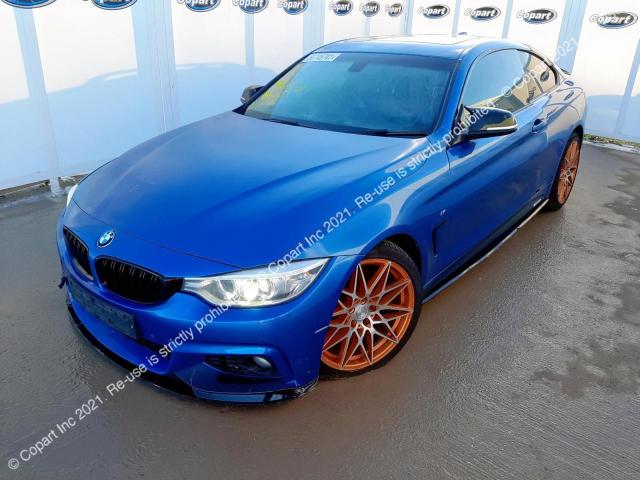
Published: 17/01/2022
The meaning of "CAT N" and "CAT S" category write-off vehicles is essential for you to know, so what you are buying in one of Copart's auctions.
The meaning of "Cat N" and "Cat S" category write-off vehicles is essential for you to know, so what you are buying in one of Copart's auctions.
Copart sells more than 125,000 Category N vehicles each year, making our daily auctions a treasure trove of opportunity. Here's what to look for:
Firstly, what does Cat N mean?
So what is a Cat N car?
Any repairable vehicle that has suffered non-structural damage is classified as Category N (or Cat N) by car insurance companies.
The term ‘non-structural’ covers a fair amount and refers to damage which does not affect the car’s structural frame or chassis.
Here's a recent example of a Cat N Range Rover up for auction:
Is Cat N the same as Cat D?
In a word, yes. Category N was introduced in October 2017 to replace the former Category D in an effort to better explain the type of repair required. The 'N' stands for ‘non-structural’.
What is Cat N damage?
Cat N damage covers anything that doesn't involve the vehicle's integral structure and is deemed safe to repair in order for the car to return to the road.
Examples can include small things like chips and scratches, or broken headlamps, or scrapes and dents to the bodywork and bumpers, as well as damage to the interior.
However, Cat N also covers more complex damage such as brakes, steering, electrics, and suspension parts.
What’s the difference between Cat N and Cat S?
The difference is down to the severity of the damage — with Cat N being the less severe.
A Category S car (formerly Category C) is any vehicle which has sustained structural damage to any part of the frame or chassis, or where the car’s structural integrity has been compromised.
Once repaired, a Cat S vehicle can also return to the road, but unlike a Cat N it must be re-registered with the DVLA first.
Here's a diagram of Cat S structural damage from the Association of British Insurers:
Is it safe to buy a Cat N car?
Absolutely! Buying a Cat N car is safe, legal, and provides a wealth of opportunities for the savvy buyer.
Keep in mind that Cat N vehicles have been involved in accidents or traffic collisions. Very often the damage is relatively straightforward — scrapes, dents, crumpled bumpers; other times it can be more complex like faulty electrics or flood damage.
For that reason, don’t assume every Cat N is drivable.
What are the benefits of buying a Cat N?
The biggest benefit — and arguably the best — is that you’ll typically pay less for a Cat N vehicle. Like for like, a Cat N car will have a significantly lower market value than a used model, even with the repair costs factored in.
There’s an enjoyment factor, too. If you have the right tools, skills, and the facilities to repair, it can be a highly satisfying experience to see a Cat N vehicle coming to life.
For example, this 2015 BMW 4-Series Coupe 425d M Sport would make a great project if you know about fixing damaged undercarriages:

What are the drawbacks of buying a Cat N?
It's all about doing your homework. You should gather as much information as possible about the car you're interested in before making a move. Do you know the full level of damage? Have you factored in the repair costs? Are new parts readily available?
The other thing to consider is that even if you restore the vehicle to its former glory, it will always remain with its write-off category. This means it will show up as Cat N in HPI checks and could affect insurance quotes.
Can I check the car before bidding?
Yes. You can visit one of our 15 Operations Centres where the vehicle is being stored. The Centres are open Monday to Friday (excluding UK Bank Holidays). Here's the Visitor Guidelines.
Alternatively, you can book a 10-minute Virtual Viewing of your chosen vehicle via our Member Services Team on 0330 021 5568.
We also recommend our free Vehicle Report available on many cars we have going through our auctions.
Of course, there’s also a vehicle inquiry check to find out its MOT and tax status.
How expensive is it to repair a Cat N car?
That depends. You should always consider three factors:
1) The level of damage: the more severe the damage, the more parts, fees or time are needed for repair.
2) The make & model: new parts for a luxe SUV will cost more than your everyday Vauxhall Vectra.
3) The person repairing: if you don't have the skills yourself, you’ll need to shop around for the best quote.
How do I know if a car for sale is a Cat N?
If you’re looking at one of our daily auctions, you’ll see the letter 'N' in the vehicle’s lane under ‘Category’.
Additionally, if you click on the vehicle's image and go into the lot information page, you’ll see the words 'N REPAIRABLE NON-STRUCTURAL' just below the lot number.
However, if you're just browsing the Copart site, you can use our Vehicle Finder to show every Cat N vehicle we have coming up for auction (it's usually over 2,000 on any given day).
You can also click on CAT N Salvage on our homepage in the ‘Browse Copart Inventory’ section.
Does a Cat N car need a new MOT?
No. Because Cat N cars have non-structural damage, the DVLA does not require a new MOT before it returns to the road. Instead, the DVLA will wait for the car’s next MOT when the existing one expires.
Can I insure a Cat N car?
Yes – providing the car has been repaired and deemed safe to return to the road, has a valid MOT, and you have proof of ownership.
Some insurance companies might refuse to offer cover for a Cat N car. This might be the case if they have concerns over the quality of the repair, or the driver's circumstances (age, no claims, points, etc.)
As we mentioned, some insurers can charge higher premiums for write-off cars.
How do I remove Cat N from a car?
You can’t. When a car has been written off the marker is permanent — it cannot be removed. Also, failing to declare a car’s category status is illegal. Anyhow, honesty is the best policy.
What are the other write-off categories?
In addition to Cat N, there are three more insurance categories:
Category A: Any unrepairable vehicle that has been written off by an insurer. The vehicle is beyond repair and must be crushed with no usable parts.
Category B: Any unrepairable vehicle with severe structural and non-structural damage. The bodyshell of a Cat B must be crushed, but usable parts can be salvaged.
Category S: Any repairable vehicle which has sustained damage to any part of the structural frame or chassis. The vehicle must pass an inspection and be re-registered before it returns to the road.
Check out our Guide to Buying a Category S Car
Popular Topics
- Copart's Expanding Network with More Auctions and More Vehicles
Copart has recently announced a significant enhancement to...
- Member Success Stories – Eddie's VW Polo
Hey car enthusiasts! Today, we're diving into the world of vehicle revival...
- Practical Picks: Affordable Cars with Low Maintenance Costs
Why low car maintenance costs matter...
- Copart UK's Top Four Favourite Cars to Modify
Rev your engines and buckle up because today, we're diving headfirst into the world of car mods...
- Winter Wonders: Car Restoration Projects
As winter blankets the British landscape, petrolheads across the nation gear up for a season of precision and passion...
- Member Success Stories – Porsche 911
In our exciting new series showcasing the incredible car restorations...


